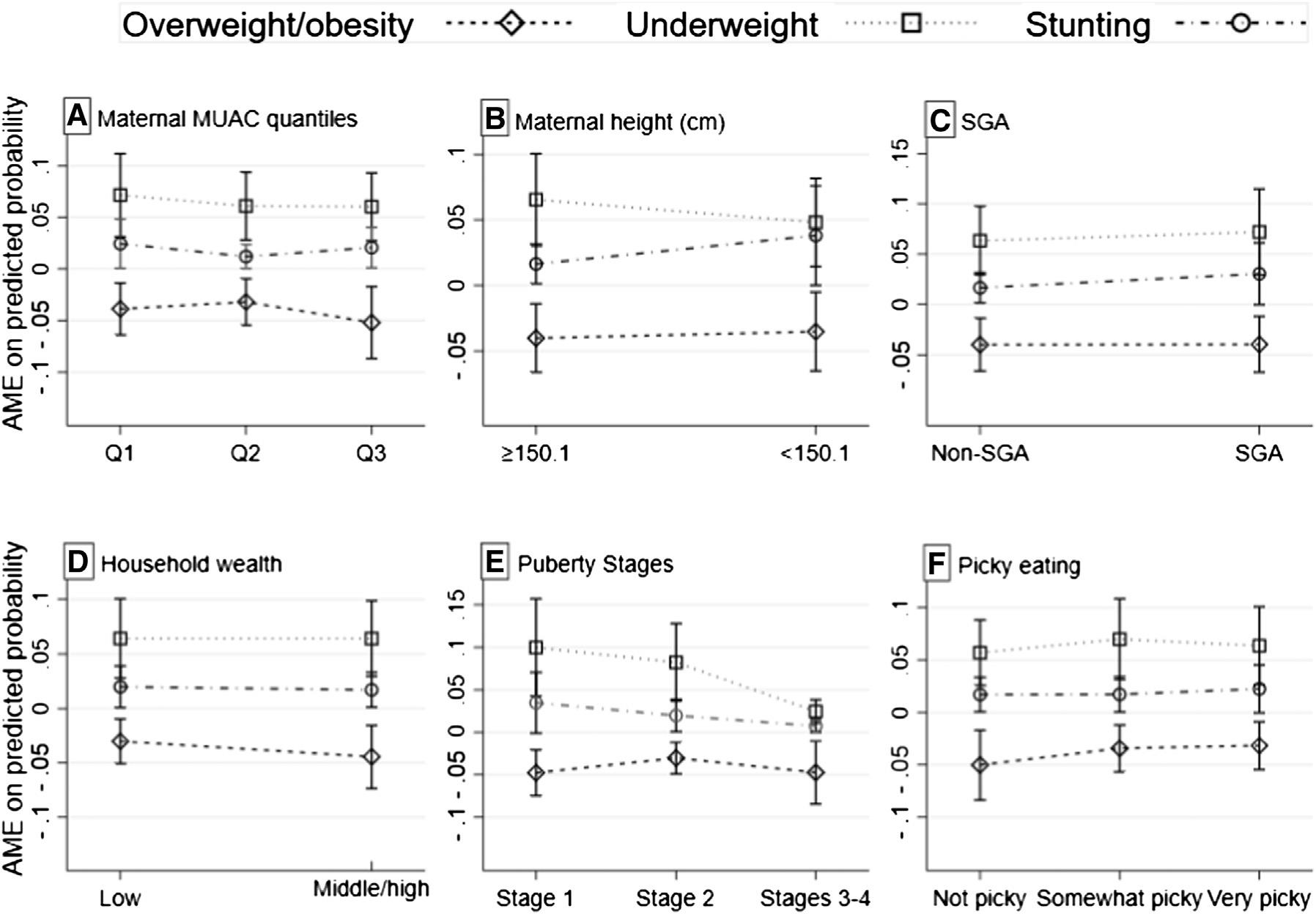营养不良的双重负担是中低收入国家面临的重大公共卫生挑战。青春早期(11-14岁)生长突增,躯体和心理出现的变化影响着青少年的营养需求及饮食习惯。中国农村地区既存在缺乏性营养不良的问题,同时随着经济的快速增长,过剩型营养不良问题也开始凸显。既往农村地区营养不良研究多集中于婴幼儿及学龄早期的缺乏型营养问题。
针对此问题,西安交通大学公共卫生学院曾令霞教授科研团队自2004年起在中国西北农村地区建立出生队列开展长期随访研究。研究显示,中国西部农村存在缺乏型(低体重17.7%、生长迟缓2.6%)和过剩性(9.6%)营养不良的双重负担,且与遗传、母亲围孕期状况、家庭经济水平、青春期性发育时相及膳食营养有关;营养不良的双重负担可能存在代际循环,而生命早期的营养干预可能是打破这种代际循环的关键方法。

Figure . Estimated sex-specific AMEs with 95% CIs according to A, maternal MUAC; B, maternal height; C, SGA; D, household wealth; E, pubertal stage; and F, picky eating on the predicted probability of double burden of malnutrition components among girls compared with among boys (as reference). The model was adjusted for maternal age, maternal education, maternal occupation, and paternal education. Double burden of malnutrition components is defined as overweight/obese only (overweight/obese and not stunted), underweight only (underweight and not stunted), and stunting.
该项研究成果以“Patterns and Determinants of the Double Burden of Malnutrition Among Adolescents: A 14-Year Follow-Up of a Birth Cohort in Rural China”为题发表在国际著名期刊The Journal of Pediatrics(JCR Q1,第11位/129个期刊,IF=4.406)。西安交通大学公共卫生学院曾令霞教授为该文章的通讯作者,来自毛利达尼亚的留学生Mohamed Elhoumed为第一作者。此研究由国家自然科学基金项目(81872633)、国家重点研发计划项目(2017YFC0907200和2017YFC0907201)等资助。
论文链接:
https://doi.org/10.1016/j.jpeds.2021.10.062